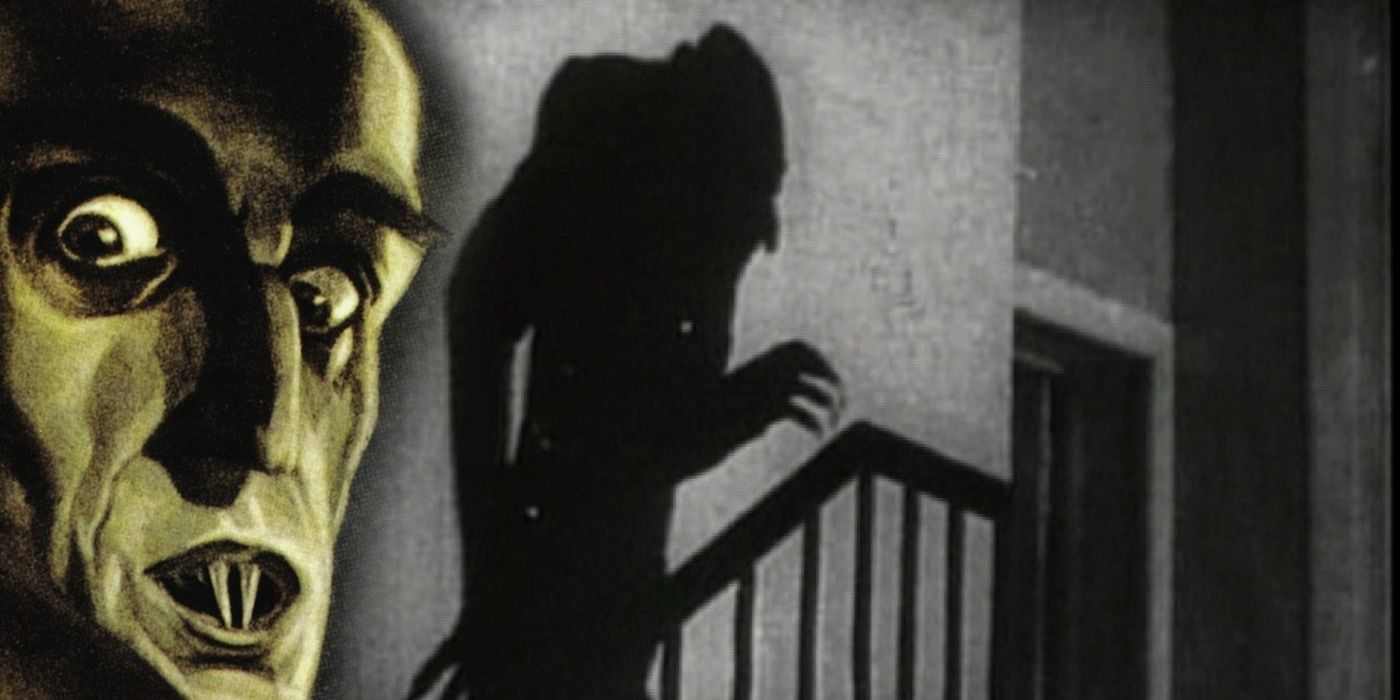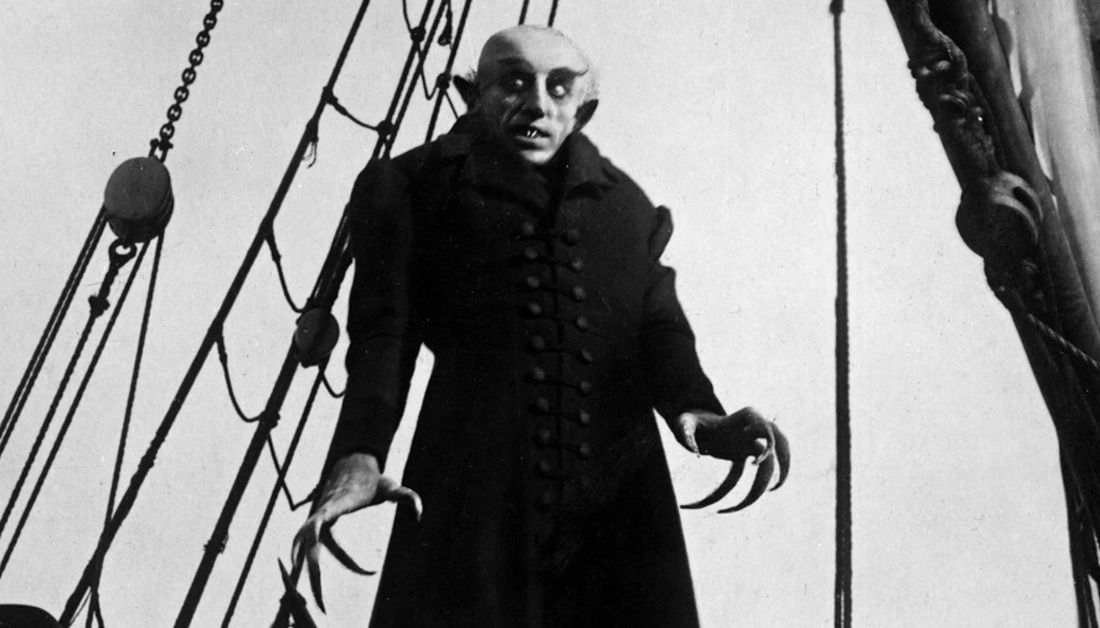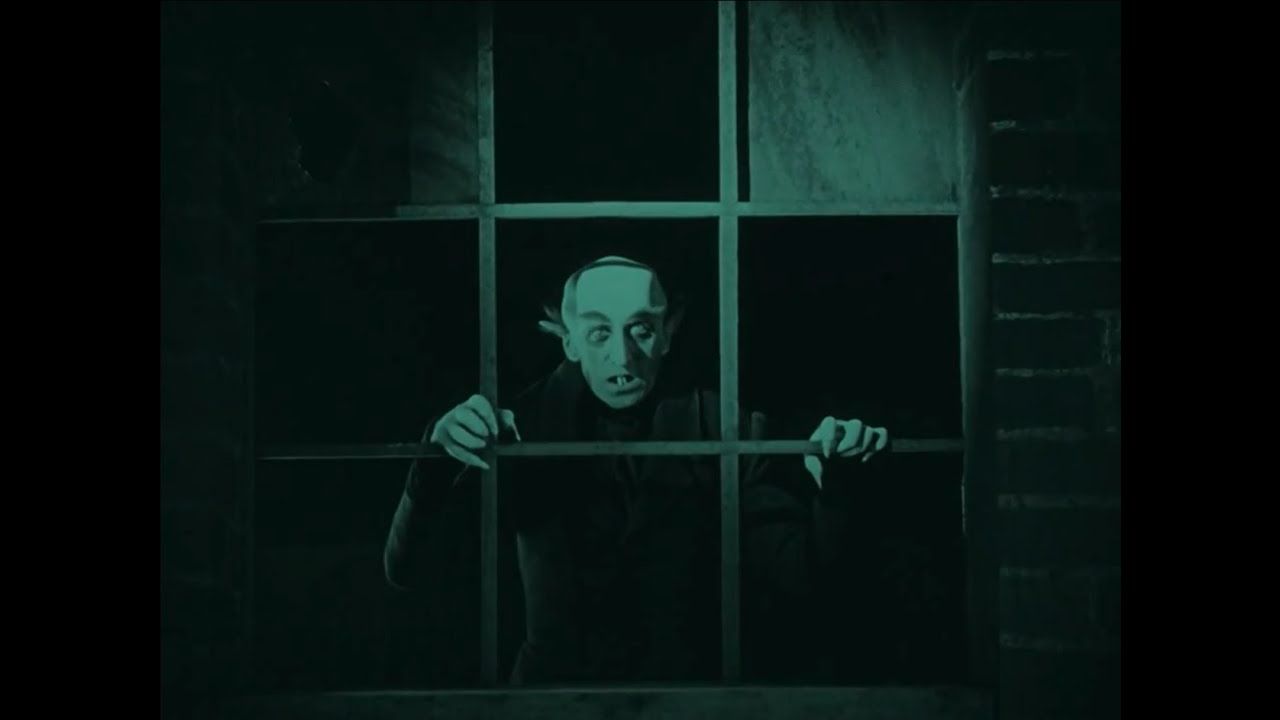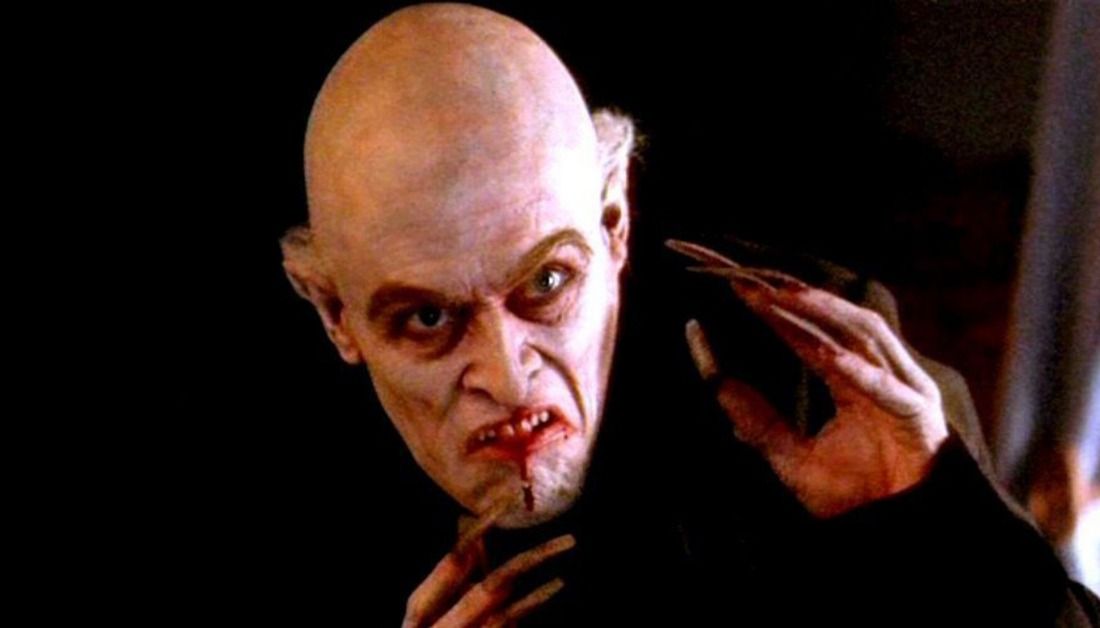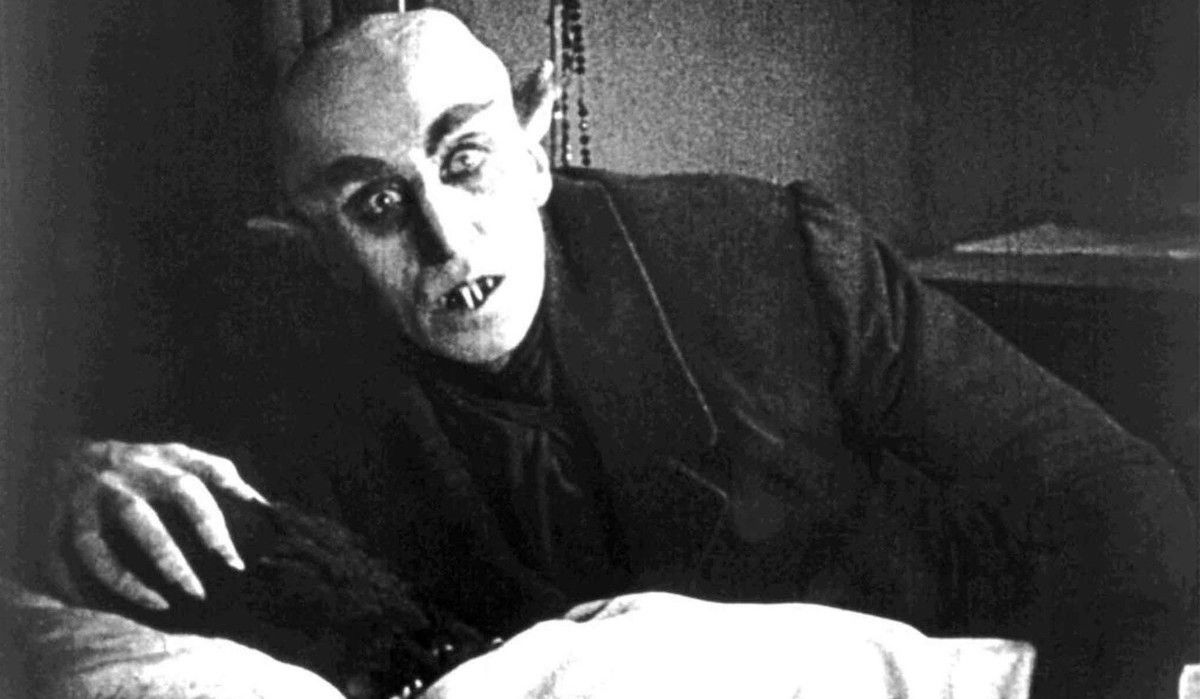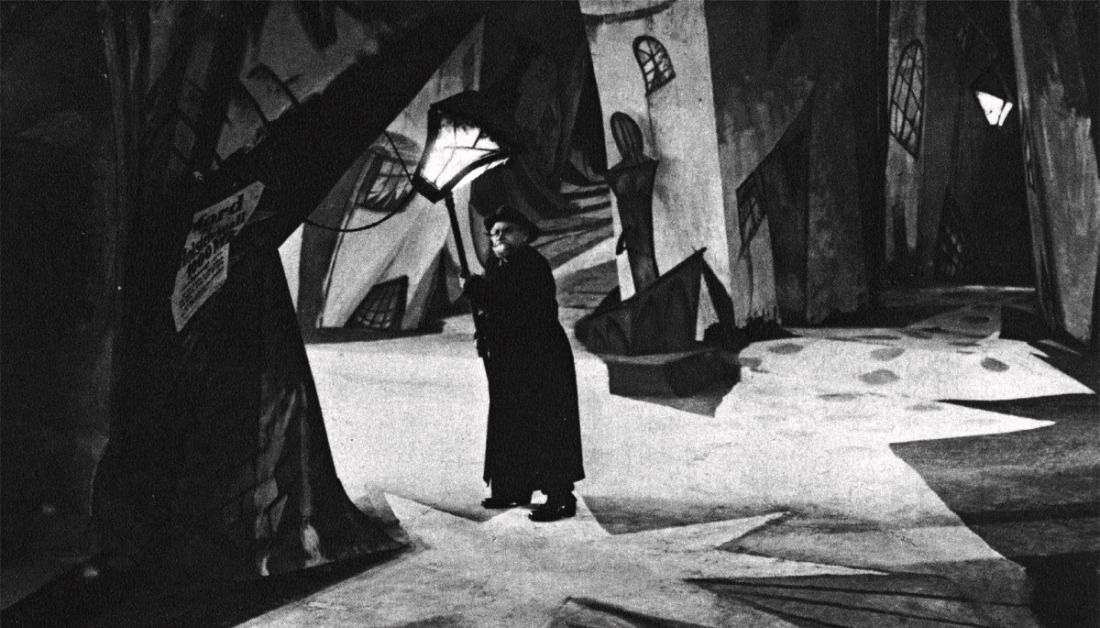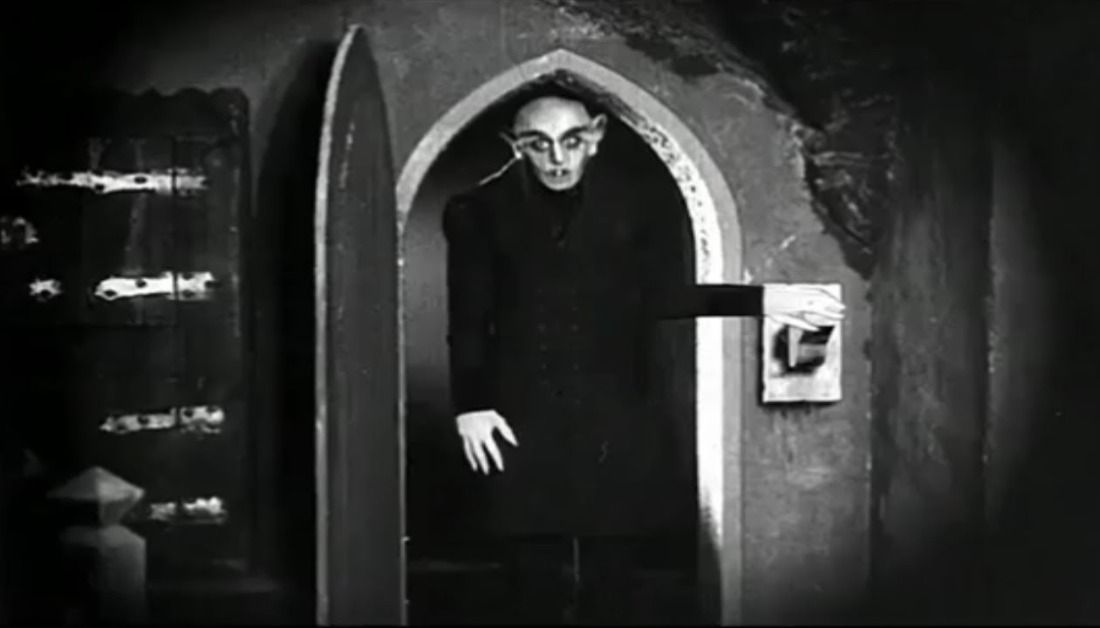When modern audiences think of Dracula on the big screen, they likely imagine Bela Lugosi's iconic portrayal in the 1931 Universal film. Perhaps Gary Oldman's take in Francis Ford Coppola's 1992 adaptation. The character is even taking on the form of a shark in an upcoming movie (and the form of Nicolas Cage in another). There are various different interpretations of Dracula, but one of the most important and earliest is a silent German film from 1922. The movie was so chilling for the time, audience members thought the lead star was actually a vampire.Nosferatu is a film that shouldn't exist, yet it laid the groundwork for the horror genre. Even those who have never heard of it have felt its impact in one way or another, from its influential showcase of German Expressionism to a simple episode of SpongeBob Squarepants. 100 years later, the film is still celebrated, and yet not enough it seems. The film remains one of the most important horror movies of all time. Nosferatu has a history just as fascinating as the film itself, and we look to celebrate it.
Early Controversy
As far as we know, Nosferatu is the oldest surviving adaptation of Bram Stoker's Dracula. There were a few films that were supposedly released before, but not much is known about them and they are long-lost to time, making Nosferatu, as one 1998 documentary about it is titled, The First Vampire.
Today, Dracula is in the public domain, meaning anyone can make a movie about the famous vampire without fear of legal repercussions. Things were a bit more difficult in the '20s. The story was owned by Bram Stoker's estate, and his widow was rather stingy with the rights. Producer Albin Grau attempted to secure the rights, but Mrs. Stoker wouldn't budge.
Grau decided to go ahead with the film anyway. He made slight changes in a feeble attempt to avoid copyright issues. This was mostly done by altering characters' names. Count Dracula became Count Orlok, Jonathan Harker became Thomas Hutter, and so on. Even the slight story changes weren't enough, as the plot was still very clearly Dracula. Changing the name from Dracula to Nosferatu was just as feeble, as Mrs. Stoker caught on instantly. The film enjoyed slight success before Stoker took the matter to court. The court ruled in her favor, and every copy of the film was ordered to be destroyed. The film would have joined the ranks of other lost films, films that are fought to be found by the Missing Movies organization, if not for one single copy.
Nosferatu Rose From the Dead
Because of the ruling, nearly every copy was indeed destroyed. This was many decades before home video was even a thought, so the theatrical reels being destroyed meant no one could ever watch it again. The German production company was even forced into bankruptcy thanks to the lawsuit, meaning the film was nothing more than a memory for years. As luck would have it, however, one copy survived. By most accounts, the lone copy made its way to America in 1929. Even then, it was rarely ever seen and existed mainly as a rumor.
Over time, the advent of home video and film restoration grew more popular. This, mixed with the fact that Dracula fell into the public domain, meant that the film could once again enjoy a wide release. The film already had a legend surrounding it, and fans ate it up immediately. Had this one copy not have survived, this iconic film would have never been seen again. It is very likely that many vampire-based works that came later wouldn't have existed either, as Nosferatu wouldn't have had the chance to inspire.
Controversy and backstory aside, what is it that has made this film last 100 years? There were countless other films which were made around this time that are but a distant memory. What is it that has allowed this specific adaptation of Bram Stoker's story to become one of the most influential and legendary films from the silent era? For starters, just look at the film's chilling lead.
A Count By Any Other Name
As stated before, Dracula's name was changed to Orlok in a failed attempt to avoid copyright issues. Orlok was played by German actor Max Schreck, a performance that has taken on a legend of its own. The name was even used for Christopher Walken's character in Batman Returns, one of several hidden details about the Burton/Schumacher films.
When modern audiences think of vampires, especially Dracula, they think of suave and sensual beings that practically seduce their prey. Orlok was the exact opposite. He had sharp fangs that weren't hidden. He had an elongated face and pointed ears that make him look bat-like in appearance. Had vampires been real, this is what they would have looked like; speaking of real vampires, Schreck was so convincing in Nosferatu that audiences were convinced he was truly a vampire.
Max Schreck wasn't a giant star, especially in America. In fact, in the States, nobody knew who he was. In a world before detailed or searchable film credits, American audiences didn't even know who played Orlock. However, his performance was chilling and believable in a way that was not common in the '20s. Some audiences then deduced that the only logical explanation was they were witnessing a real vampire.
Whenever Max Schreck's name did enter the public eye, it didn't help his case. Max Schreck was a very reclusive man. He was never seen outside his films, and very little was known about him. Even his name, Schreck, roughly translates to "terror," a fitting name for a vampire trying to pass as a human.
The theory that Max Schreck was a vampire has lived on well past the film. In 2000, a film titled Shadow of the Vampire was released. The movie is about the making of Nosferatu and features John Malkovich as director F. W Murnau and Willem Dafoe as Max Schreck. The movie is a fictional account of the making of the film, as Schreck is very clearly portrayed as a real vampire. This film only drove the theory home, and many today still swear a real vampire was filmed in 1922.
German Expressionism
German Expressionism refers to an art movement that came out of Germany. This art form allows an artist to freely express themselves without the limitations of verisimilitude. This replaces realistic architecture with something straight from the imagination. The buildings twist and turn in unnatural ways, and things such as shadows do not obey the laws of physics. Shadows get downright angular.
When the film industry began to rise, this movement made its way to the big screen; one of the early examples can be seen in the 1920 masterpiece The Cabinet of Dr. Caligari. This allowed German Expressionism to take on a new life. It transports the viewer into the minds of the filmmakers and places them in another world. Not only was the film design affected, the performances were as well. Twisted facial expressions and unnatural camera movements stood out immensely from the rather bland filmmaking of the time.
Nosferatu is one of the shining examples of German Expressionism. The dark and twisted world sent chills up the spines of audiences in 1922. The creeping shadows and deformed buildings made them truly believe they were looking in through a window to another world. This movement's impact is still felt today. Filmmakers such as Tim Burton still use twisting and turning buildings to bring their imaginative worlds to life.
100 Years Later
Today, Nosferatu is praised as one of the most influential and scary vampire films of all time. The film helped make horror a serious genre and is partly responsible for the Universal Monster movies that spawned nearly ten years later. Horror fans are still watching it and finding newfound respect with every viewing. The film is in the public domain, so it is very easy to find. A quick Google search and fans can watch it legally on sites like YouTube (and below, in 1080p). However, the best way to see it is the restored version on Blu-ray.
Many people may have first been introduced to Count Orlok when he appeared in the classic SpongeBob Squarepants episode, Graveyard Shift. He is called Nosferatu and is shown to be a trickster who fiddles with the lights. This episode inspired young viewers to figure out just who this creepy man was, and this budded into a love for horror. Its continued influence on horror can be seen in recent films like The Babadook and The Lighthouse (directed by Robert Eggers, who is apparently remaking Nosferatu, with filming beginning this year, one full century after its initial release).
Nosferatu should be viewed by any horror fan or just lovers of film in general. It is incredible to think that a movie made 100 years ago not only still exists and entertains, but still inspires the wild imaginations of its viewers worldwide.

